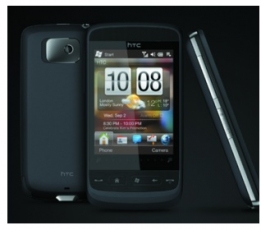
The booming Indian handset market is dominated by industry bigwigs such as Nokia, Samsung and Motorola. But niche players are also beginning to make their mark. HTC India, the Indian arm of Taiwanese handset maker HTC Corporation, is one such player. Since its debut in the Indian market, HTC has established a strong presence in the midand highend mobile handset segments.
Background
Ajay Sharma, country head, HTC India, states that the company's strategy has been "to offer a range of data-centric devices to every segment – students, housewives, businessmen". He adds, "We have created brand saliency and top-of-the-mind recall through effective promotion via various channels, not only for end-consumers but for channel partners as well."
HTC India entered the Indian market in 2007, with the launch of the HTC Touch in collaboration with Bharti Airtel. Since then, it has built up a portfolio of 16 devices. Of these, 13 are GSM based and three are on the CDMA platform. The offerings are priced between Rs 11,000 and Rs 42,000 and are a mix of personal digital assistants, smartphones and touchscreen devices.
Marketing strategy
To begin with, the company targeted mainly high-end users. But it has since shifted its strategy to include mid-range users as well. It recently introduced two new devices: the HTC P3400i, in the Rs 10,000 price range, and the HTC Touch Viva, priced at Rs 13,000.
This has helped it further consolidate its presence. According to company estimates, HTC India has sold around 300,000 devices in the country since 2008, notching a growth rate of almost 300 per cent over the previous year. The company claims to have a market share of around 20 per cent in the above Rs 10,000 mobile devices segment. Today, touchscreen devices comprise close to 90 per cent of HTC's portfolio and account for over 95 per cent of its total sales.
For its distribution channels in the country, the company has partnered with various mobile operators.
It, for example, joined hands with Reliance Communications (RCOM) to launch the HTC P3000, HTC S720, HTC Touch Diamond (CDMA P3051), and the HTC Touch2 smartphone. The Touch2 is based on the Microsoft Windows Mobile 6.5 platform and has features like Qualcomm's MSM7200A processor, 512 MB ROM, 288 MB RAM and a QWERTY keyboard. It is priced at Rs 24,490 in Maharashtra and Madhya Pradesh, and Rs 22,490 elsewhere in India.
Similarly, HTC has tied up with Bharti Airtel to bring out the HTC Touch Diamond, HTC Touch Diamond2 and the Android-powered HTC Magic. The HTC Magic handheld, which costs almost Rs 30,000, offers users Outlook synchronisation facility, smart dialler functions, and an onscreen keyboard with predictive text. Bharti Airtel customers can also download 100 MB of data per month free of charge for a period of six months.
HTC has also tied up with Idea Cellular for the HTC Touch Pro and HTC Touch Viva handhelds.
The outside view
While the company is pulling out all the stops to garner more market share by tapping the smartphone segment, industry analysts feel the competition in this category is tough and HTC may not be able to take on global leaders such as Nokia and Research In Motion. In the mid-user segment too, MNCs like Samsung, LG and Sony Ericsson are well entrenched. HTC has no immediate plans to venture into the low-end segment. This, analysts feel, may put it at a disadvantage in the long run.
Sharma disagrees though. "We have very successfully partnered with leading names in GSM and CDMA and our sales figures for 2008 speak for themselves. We are not worried about competition. We will concentrate on our own product portfolio and deliver best-in-class devices to our consumers," he asserts.
Future plans
HTC India is aiming to double its market share in India over the next two years. It hopes to sell 500,000 handsets in calendar year 2009 and expects sales to double in 2010. The company is also planning to launch 10-12 new models over the next three quarters. The new models would come at a starting price of about Rs 10,000. This, HTC hopes, will push its market share to 25 per cent by March 2010 in that segment.
HTC India is also looking to ramp up its distribution network and increase its retail presence significantly, moving into Tier II and Tier III cities. It is looking to boost its presence by providing a greater number of contact points for customers and improve its after-sales service by increasing the number of service centres with well-trained staff.
The company is obviously keen to leverage the opportunity provided by the upcoming 3G auctions to fuRther strengthen its market position. According to Sharma, the company is looking to introduce two or three 3G-enabled devices per quarter in the Rs 10,000-plus category. It seems that despite the presence of the major global players in the Indian handheld market, HTC India is striking the right note with consumers.